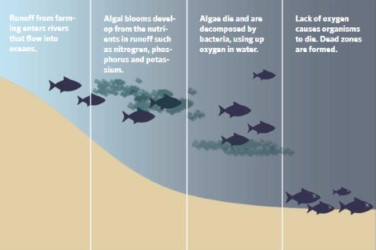Challenge finalists aim to solve hypoxia
The Tulane Nitrogen Reduction Challenge selected five finalists based on their proposed solutions to hypoxia, a fatal oxygen deficiency in lakes and oceans creating ecological dead zones where marine life cannot survive.
Tulane University and Tulane alumna and philanthropist Phyllis Taylor partnered to create the challenge. Taylor will present a $1 million prize to the team that creates an innovative and workable solution to hypoxia, as chosen by the Challenge Advisory Committee. Taylor said she wanted to create a market-based solution which rewards innovation and risk-taking to create sustainable technologies.
Hypoxia hits close to home for the New Orleans community, as the Gulf of Mexico is now the second-largest dead zone in the world. Hypoxia is primarily caused by nitrogen nutrient fertilizers’ runoff from farms. This runoff enters the Mississippi River and drains out into the Gulf, depriving the area of sufficient oxygen and killing marine life. Finalists focused on eliminating or limiting this runoff when creating their submissions.
The advisory committee, consisting of 15 experts in fields such as agriculture and engineering, selected five teams as the finalists. Representatives from eight different countries participated in the challenge, including the United States, Australia, Canada, Chile, Brazil, India, Ireland, Israel and Singapore.
“[Recruitment] was a critical part of the challenge to ensure we had the quantity of teams, and quality teams for a fruitful competition,” Leah Berger, director of the Tulane Nitrogen Reduction Challenge, said.
According to Berger, teams were recruited from several sectors, including agriculture, academia and business. Recruiters used newsletters and social media to encourage submissions.
“There is not a single ‘silver-bullet’ approach to combatting hypoxia,” Berger said. “That is why we are taking the approach of a challenge that will invite [people with] innovative initiatives, without many stipulations, to come forward and apply.”
The issue of hypoxia is present across the globe. Aside from its ecological impacts, it can also harm the local economies of coastal regions affected by dead zones.
“I was intrigued and inspired by some submissions that really took a risk and suggested something fundamentally different from the direction I think the field has been moving toward in recent decades,” Advisory Committee member Beth Stauffer said.
The Advisory Committee’s top five team selection was unanimous. During the evaluation and selection process, the committee incorporated input from producers who would be using these proposed technologies to make sure the solutions were feasible.
At the summit recognizing the finalists, challenge organizers discussed the importance of partnerships and how a collaborative effort to combat hypoxia will be more effective than any one agency working alone.
“There is not a single solution or agency alone that will combat the Dead Zone and hypoxia,” Berger said. “We recognize that government agencies have a role, as does academia, research and development, farmers, etc., as well as innovations like our top five teams.”
Now that the top five teams have been selected, phase two of the challenge will begin, consisting of in-field trials testing each team’s approach and its effectiveness.
Advisory Committee members and challenge organizers will evaluate the team performances in the next phase. The teams will also submit documents describing how their solutions will help minimize nitrogen application and loss.
While only one team will be chosen for the $1 million prize, Stauffer said she hopes that all of the finalists will continue their progress in the field of nutrient management to create viable solutions to hypoxia after the challenge is over.
“All the Top 5 Teams have valid solutions and each can have a potential role in the future,” Berger said. “There is plenty of work to be done.”
*Senior Staff Reporter Kathryne Lebell contributed to the reporting of this story.
Your donation will support the student journalists of Tulane University. Your contribution will allow us to purchase equipment and cover our annual website hosting costs.




Leave a Comment